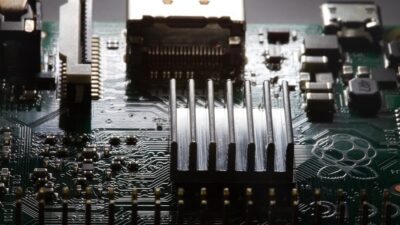The rapid evolution of technology has long been reshaping traditional education, but the emergence of the metaverse—a collective virtual space combining augmented reality (AR), virtual reality (VR), and the internet—has ushered in a new era for learning. Education in the metaverse is not just a futuristic concept; it’s a transformational shift that is redefining how students engage with knowledge, each other, and the world around them.
What is the Metaverse?
The metaverse is a decentralized, immersive digital universe that allows users to interact in real-time through avatars in various environments. These can range from fantastical landscapes to recreations of real-world institutions. This immersive experience offers an unparalleled opportunity for experiential learning, collaboration, and creativity, enabling students to explore subjects in deeper, more interactive ways.
The Benefits of Metaverse Education
1. Immersive Learning Experiences
Traditional textbooks often struggle to capture the complexities of subjects like biology, history, or physics. In the metaverse, students can conduct virtual dissections, walk through historical events, or experiment with physical laws in real-time. This level of immersion promotes deeper engagement and enhances understanding.
2. Personalized Learning Paths
The metaverse allows for customization of the educational experience. Educators can tailor lessons based on individual student needs, preferences, and learning styles. Avatars can adjust difficulty levels, offer alternative resources, or even switch to different learning modalities, catering to everyone from visual learners to kinesthetic learners.
3. Global Collaboration
With geographic barriers removed, students can collaborate with peers from around the world in real-time. Whether discussing a project or solving complex problems, this global perspective fosters cultural awareness and teamwork skills, preparing students for an increasingly interconnected world.
4. Safe Learning Environments
In the metaverse, students can engage in risk-free simulations that allow for mistakes and learning without real-world consequences. This safe space encourages innovation and experimentation, essential for nurturing critical thinking and problem-solving skills.
5. Access and Inclusivity
The metaverse has the potential to democratize education by providing access to resources and experiences that may otherwise be unavailable due to socioeconomic factors. Virtual field trips to museums, planetariums, or historical sites can occur without cost barriers or physical travel, ensuring equity in educational opportunities.
Challenges and Considerations
Despite its promising future, the integration of the metaverse into education is not without challenges:
1. Technology Access
Not all students have equal access to the necessary technology or reliable internet connectivity. Ensuring equitable access remains a critical consideration for educators and policymakers.
2. Digital Literacy
As the metaverse expands, the need for digital literacy will become increasingly important. Educators must teach students how to navigate these virtual spaces responsibly and effectively.
3. Privacy and Security
With the use of AI and data collection in the metaverse, concerns around student privacy must be addressed. Schools and educators need to implement robust data protection measures to safeguard student information.
4. Educator Training
Educators must be equipped with the skills to utilize metaverse technology effectively. Ongoing professional development is essential to ensure that teachers can create and manage immersive learning experiences confidently.
Future Directions
The potential of the metaverse to transform education is vast. As advancements in technology continue, we can expect:
- Hybrid Learning Models: The combination of in-person and metaverse experiences could create a more flexible, comprehensive educational model.
- Innovative Assessment Methods: Traditional testing may evolve into more interactive forms of assessment that evaluate a student’s ability to apply knowledge in simulated scenarios.
- Collaborative Learning Spaces: Institutions may develop virtual campuses where educators and students can come together, regardless of physical location, to learn and create.
Conclusion
Education in the metaverse represents a paradigm shift that extends learning beyond the confines of the traditional classroom. By harnessing virtual realities, educators can create immersive, engaging, and inclusive learning experiences that resonate with today’s digital natives. While there are challenges to overcome, the potential benefits are immense. As we navigate this new educational frontier, collaboration among educators, technologists, and policymakers will be crucial in shaping a transformative learning landscape that benefits all learners.



